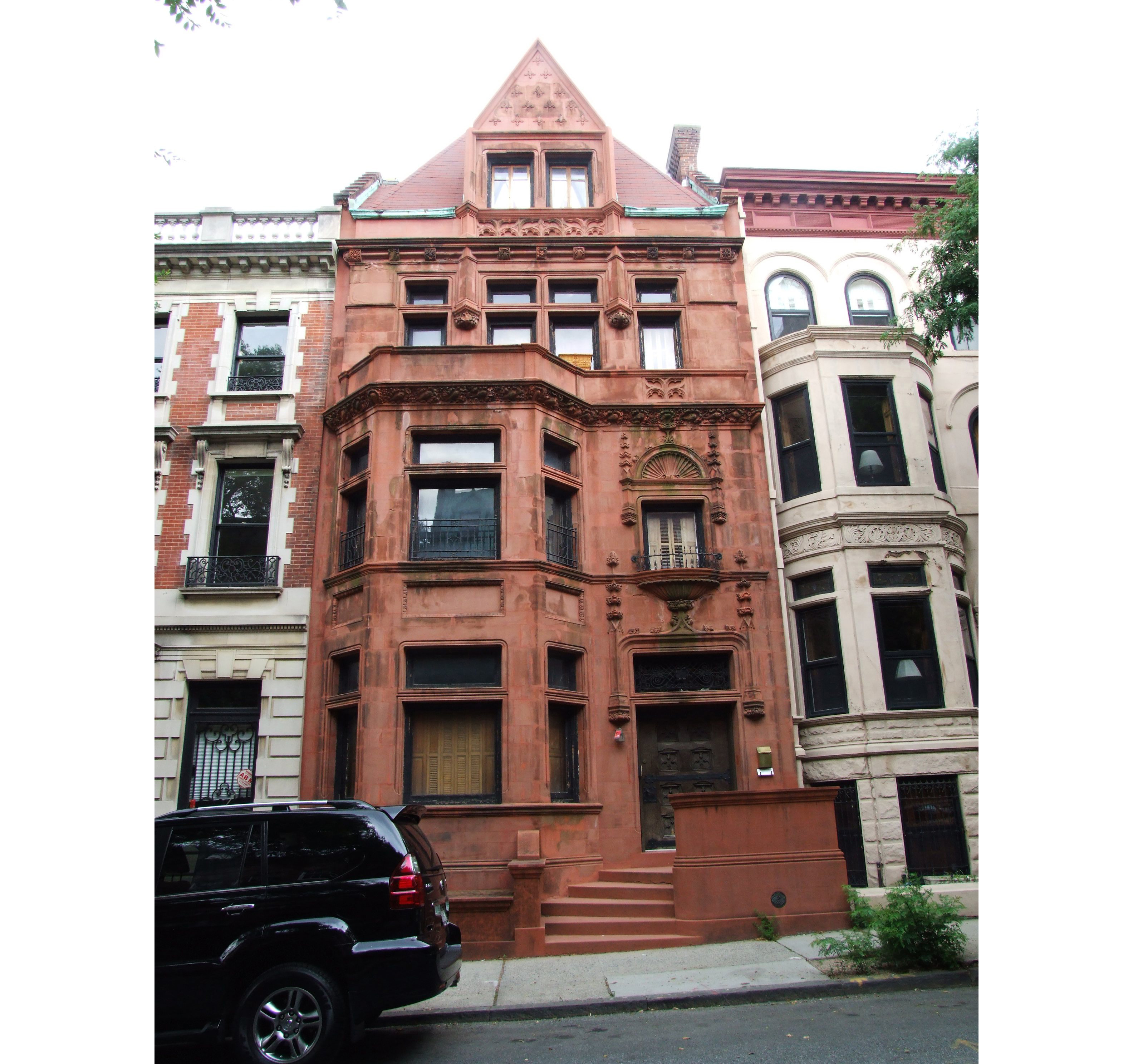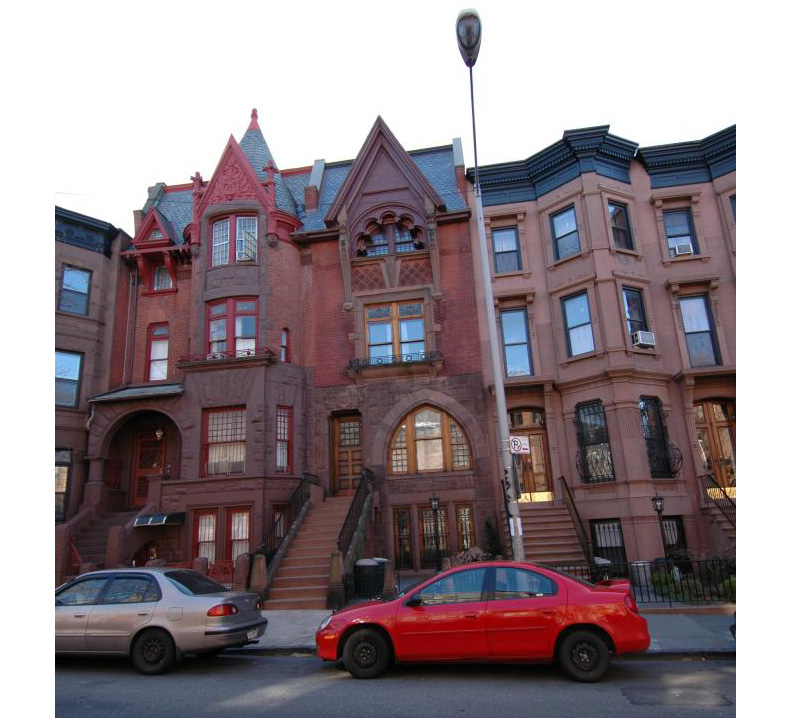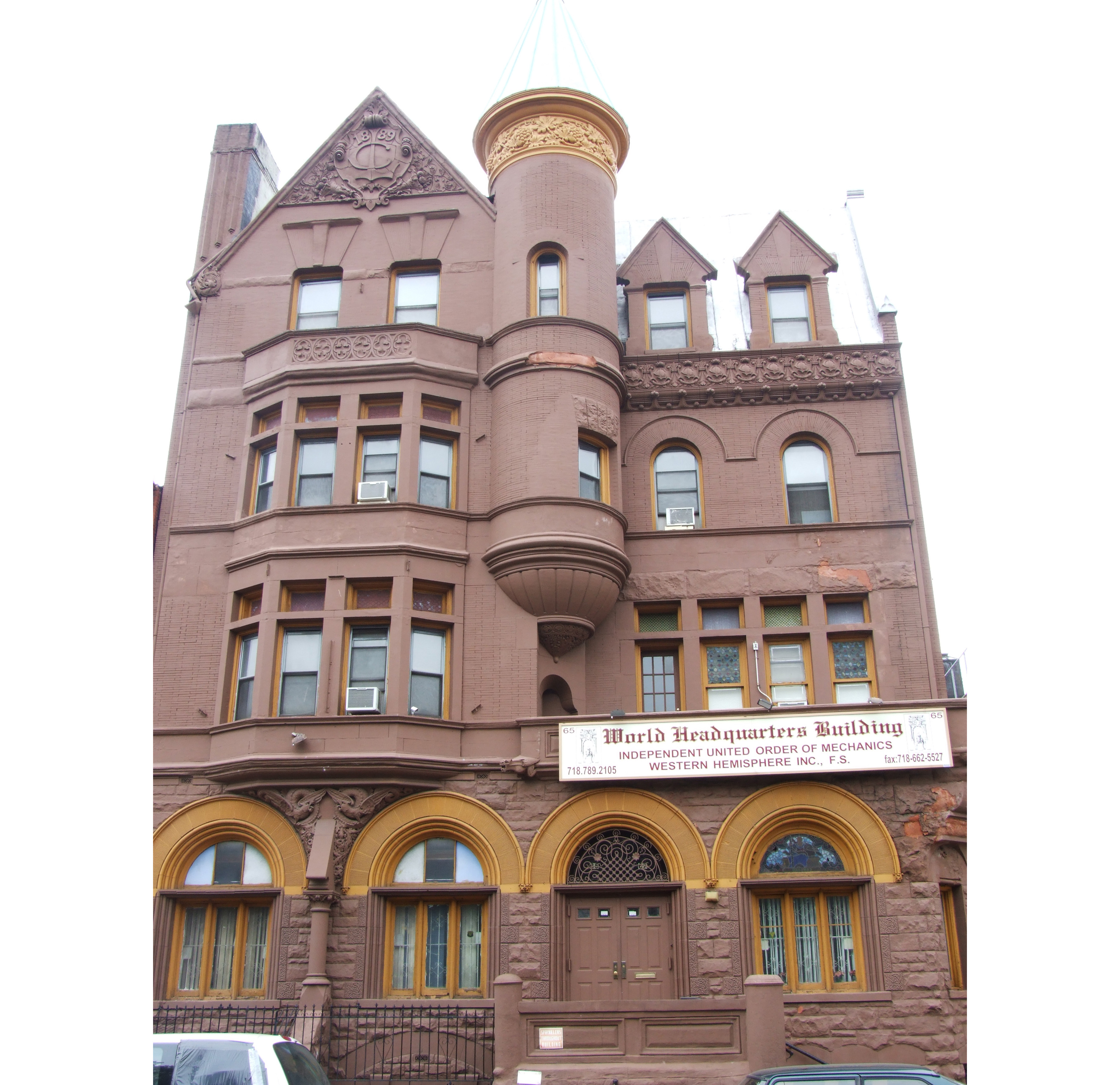Walkabout: Rudolph L. Daus, Architect
A list of the top twelve Brooklyn architects would have to include Rudolph L. Daus, a man with an interesting, and international story.

Greenpoint Library in 1904. Photo via Brooklyn Public Library
19th century Brooklyn architects were a uniquely diverse set of men, with different backgrounds, education, national origin, and degrees of talent. A list of the top twelve would have to include Rudolph L. Daus, a man with an interesting, and international story.
He was born in Mexico in 1854. A German Catholic, his family may have been part of a large group of Germans who settled in the Mexico City area during the middle of the 19th century.
They were no doubt well off, and young Rudolph would receive his education in the United States, Berlin and France. In Paris, he studied at the prestigious Ecole des Beaux-Arts, where he excelled, winning the Achille LeClerc Medal, as well as other honors.
In 1879, he came back to NY, and worked at the studios of two American Ecole alumnae, Richard Morris. Hunt and George B. Post, both extremely significant architects in their own right.
Hunt was one of the premiere architects of the Gilded Age, who designed Carnegie Hall and Biltmore, the Vanderbilt mansion in Asheville, NC, while Post was the designer of the Brooklyn Historical Society and the NY Stock Exchange.
Daus set up his own practice in 1884 in downtown Brooklyn, and worked there until he retired at age 54.
What makes Daus so important is his body of work, much of it in Brooklyn, and the variety within that work. He didn’t restrict himself to only one style.
Trained in the neo-Classic style of the Beaux-Arts school, he fluently moved through that style, creating some of his best buildings, including the NY & NY Telegraph and Telephone Building, at 81 Willoughby Street, in downtown Brooklyn, and his NY County National Bank, on the corner of 14th Street and 8th Avenue, in Manhattan.
He designed some beautiful buildings in the Renaissance Revival style, including an extremely fine townhouse at 266 West End Avenue, and his majestic Hoffman House Hotel on Broadway and 25th Street (demolished).

In Park Slope, he showed his use of imagination and use of disparate elements in the wonderfully eclectic houses at 47 Montgomery Place, and 176 and178 St. Johns Place, built for two doctors. Another great group is at 382-426 4th Street.

One of his most unusual designs is the Queen Anne row house found at 74 Halsey Street, in Bedford Stuyvesant, a wonderful mixture of well thought out massing of shapes, wrought ironwork, intricate brickwork, and dragon headed carved wooden brackets under the peaked roofline.
Daus had several important commissions in Bedford. In addition to this house, his design for the 13th Regiment Armory on Sumner Avenue would place his name on the roster of the shapers of Bedford Stuyvesant’s architectural legacy.
Not that the armory came easy. His design was one of three submitted in a competition for the job. His design was chosen the winner, but he immediately got in a large and very public dispute with the commanding officer of the regiment, who felt that Daus had cheated.
THAT story will be told shortly. Daus’ work with the NY & NJ Telephone Company also led to his design of an office and switching station at 613-19 Throop Avenue, near MacDonough St. In nearby Clinton Hill, he designed the Lincoln Club, a wonderfully eclectic Queen Anne private club for some of the Hill’s most prominent Republicans.

Daus was quite well connected about town, and was appointed the Surveyor of Buildings for Brooklyn in 1899-1900, and was a member of the architect’s committee for the Brooklyn Carnegie Libraries.
He designed the Greenpoint Carnegie Library (demolished and replaced), the Flatbush, Walt Whitman and Saratoga branches.
He was secretary of the Commission of 1898 which framed the building laws of New York City, and was a President of the Brooklyn chapter of the American Institute of Architects.
He was also quite prominent in Brooklyn Catholic circles, and designed and remodeled several churches and institutions, including Our Lady of Lourdes, The Monastery of the Precious Blood, and the St. John’s Orphan Asylum, which once stood at Albany Avenue and St. Marks Place in Crown Heights.
Daus’ other buildings include the German Hospital, now the Wyckoff Heights Hospital, a remodeling and extension for the now demolished Kings County Hall of Records, a warehouse and factory in DUMBO at 135 Plymouth Street, and another building for the Telephone company in Newark.
He competed for the commission to design the Brooklyn Fire Headquarters on Jay Street, along with other Brooklyn architectural luminaries such as the Parfitt Brothers, and J.C. Cady, but lost to Frank Freeman.
He remained an avid Francophile his entire life, and was a member of the Society of Beaux Arts Architects. He lived in Brooklyn, and had a wife and a daughter named Henriette.
They were active in Brooklyn Society, and Rudolph Daus was often written about for his love of horses and racing and Mrs. Daus for her love of dancing. They summered at their home in Arverne-By-the-Sea on Long Island.
In spite of his busy life, Rudolph Daus suffered from ill health, and was forced to retire at the age of 54. He returned to France, and spent his final years in Paris, dying in 1916 at the age of 62.
His obituary in the Brooklyn Eagle called him one of the pioneers among Brooklyn architects. Another critic wrote, His work will always characterized by its dignity and strength, and none ever strove in a nobler way and held higher the standard of his profession.
For photos of Rudolph Daus’ work, please see my Flickr page.
Research for this article from the LPC designation report for the NY & NJ Telegraph and Telephone Building, the Brooklyn Eagle, the New York Times, and other on-line sources.





I wonder if Daus designed any houses in Brooklyn Heights? If not, I am jealous.
Interesting how many of these architects were active in the Catholic church.
Yes, Amzi all she has to do *gritting my teeth* is sit down and put it together. I suggest a protest gathering of those demanding a literary effort outside her house. I can make signs and I know where to get a bull horn. 🙂
Montgomery Place is such a great street… It has a UES feel to it but better.
With all the work MM has done the book is already here…
His work is so interesting- he seems to use more pronounced elements so the buildings are more sculptural- the armory is amazing. The Bedford armory by me is one beautiful building- this one by Daus is impressively fearsome. Thanks MM.
BOOK BOOK BOOK!!!!!!!!
74 Halsey is on of my favorite houses in Bedford. Again, great work MM.
BOOK, BOOK, BOOK!!!
secretly one of my favorites.. I wish he did more homes here in Brooklyn. 1916 was not a good year for these architects.. Three big losses that year…
Fantastic houses and interesting story.